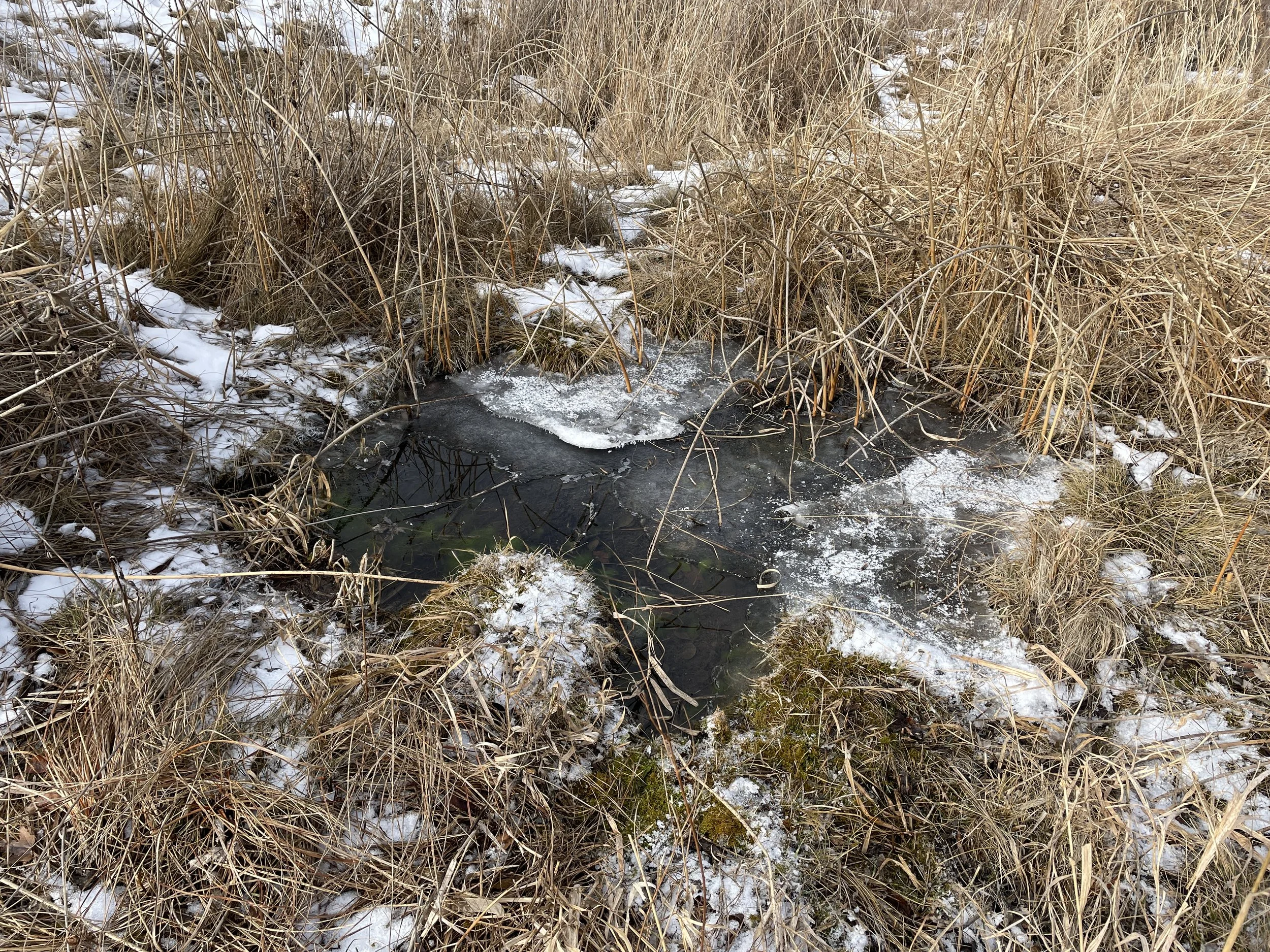
Kishwaukee Fen Nature Preserve
It may be hard to believe, but nestled alongside a golf course and an old crop field in Lakewood you can find one of the rarest natural communities in America – a mosaic of fens, sedge meadows, and prairies. These unique 36.578 acres were permanently dedicated as an Illinois Nature Preserve in 1993.
This beautiful, ancient, remnant ecosystem is important to global biodiversity conservation and as a rich educational and cultural asset to the local community.
The landscape that we see here today began as the Wisconsin ice sheet melted and retreated from this region some 14,000 years ago. The site is located on top of the Woodstock Moraine and is in the headwaters of the Kishwaukee River which flows west to the Rock River. Kishwaukee Fen evolved in a small, gently sloping valley formed by glacial meltwaters. This gentle valley was likely a temporary meltwater outlet associated with the formation of nearby Crystal Lake. After all glacial ice melted, including buried ice which took centuries to melt, the modern landscape we see today formed and stabilized. Then, the major hydrologic influence shifted to groundwater flowing very slowly through sand and gravel deposits within the uplands. This groundwater system produced springs, fens and sedge meadows in close association with cold water streams. The constant flow of cold, mineralized groundwater over millennia allowed the formation of unique wetlands such as raised fens, wet prairies and sedge meadows. This prehistoric groundwater system is still intact today and readily evident as seeps and spring runs as well as the surviving raised and hanging fens. This intact groundwater system is critical to the long-term health and restoration success at the Kishwaukee Fen Nature Preserve. It is also the best reason why “Kish Fen” is worthy of restoration efforts – to save rare, unique, and irreplaceable nature and biodiversity.
The gems of Kish Fen are its raised and hanging fens. These unusual ecosystems start deep in a glacial moraine rich with limestone. As rainwater percolates through the moraine, it dissolves calcium and magnesium and becomes highly basic (the opposite of acidic). Most plants and microorganisms have a hard time growing in such alkaline or calcareous environments. Specialist “fen plants” adapted to such places thrive here, with the benefit of genes that in the future may help food plants adapt to changing climate conditions.
While fens take thousands of years to develop, their collapse can happen very quickly if they are not cared after. As wetlands they are very sensitive to changes in water flow in the surrounding areas. These days they are also threatened by shading and suffocation from invasive species such as European buckthorn, reed canary grass, and purple loosestrife.
Thanks to legal protection by the Illinois Nature Preserves Commission (INPC) and its largely undisturbed hydrology, Kishwaukee Fen escaped the worst declines suffered by most Illinois wetlands. Though struggling, most if not all the original fen flora and fauna still call the preserve home. This makes Kishwaukee Fen a gem of biodiversity preservation.
The fen is a gateway through time, a rare and precious remnant of ancient ecosystem right in our midst.
When we began our work in 2021, the priority was the highest quality five acres of fens and sedge meadow. These were beset with invasive species of brush and weeds. Those threats have already retreated dramatically. Most brush in the highest quality areas is now gone. Such deadly invasives as reed canary grass and purple loosestrife are in sharp decline, although major work is still needed in some areas. On the other thirty acres, we have years of work ahead of us before this Nature Preserve is as rich and sustainable as it needs and deserves to be. The needs of this precious site call out to us.
Until recently, Kishwaukee Fen had remained an “orphan,” according to INPC rep John Nelson. Though formally recognized for its exceptional biodiversity, it had been gradually degrading for decades under the impact of invasive species. Like many natural areas, it hadn’t seen the kind of continuous and caring land stewardship it deserved.
Then in October 2021, it got what it needed: a spark of renewed involvement from an engaged human community. In response to John Nelson’s concerns, the Village of Lakewood, Friends of Illinois Nature Preserves, and The Land Conservancy of McHenry County partnered to support citizen stewardship for this needy preserve. Since then, the new Friends of Kishwaukee Fen have met two to three times each month to study and fulfill the ecological needs of this impressive place.
Kishwaukee Fen’s future depends on the caring hands and hearts of many. Restoring it to health will be a long-term community project. The fen awaits more people who will be inspired by its unique nature, who are interested in taking an active role in its restoration and stewardship, and who are eager to be part of a warm and local community specially connected to the fen.





